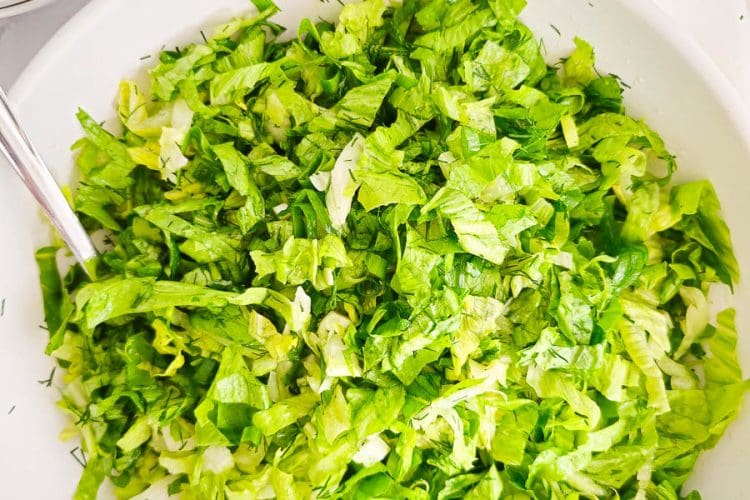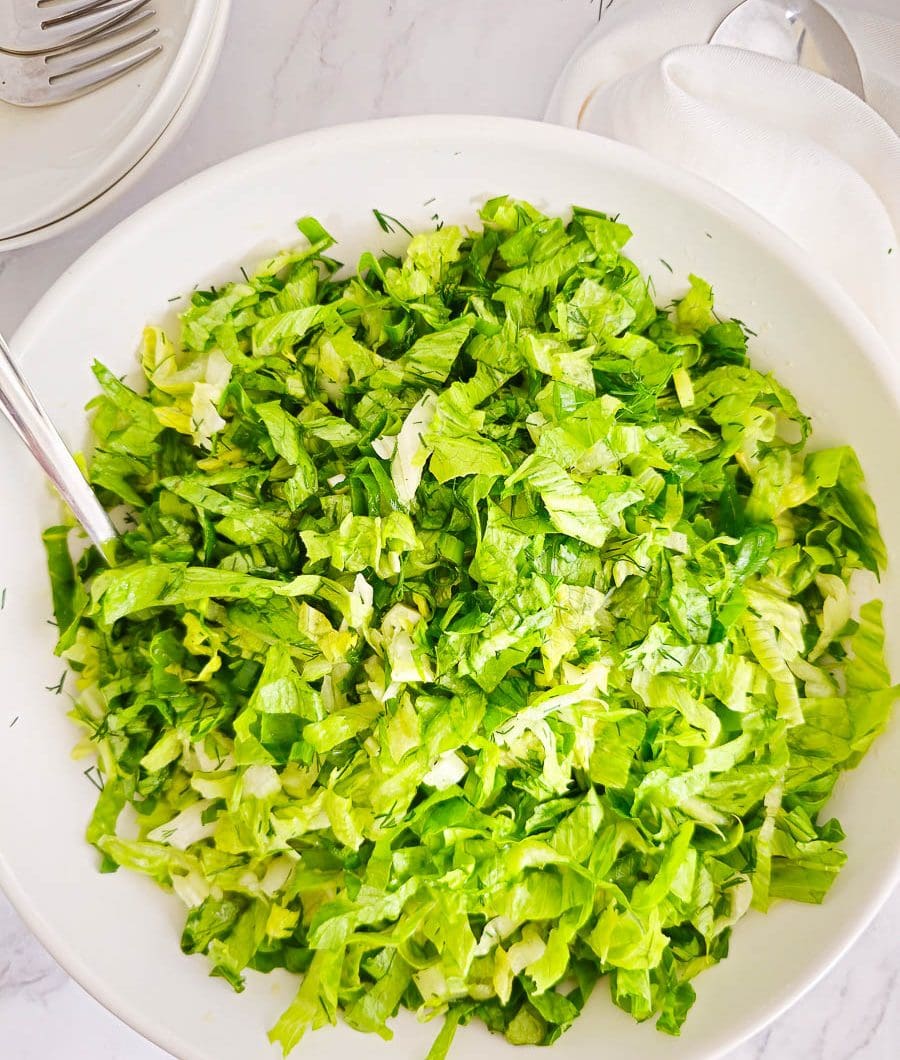Ready in just 10 minutes, this refreshing Greek Lettuce Salad features crisp lettuce, spring onions, fresh dill, and an olive oil vinaigrette dressing, making it a light and flavourful side dish to accompany any main meal.
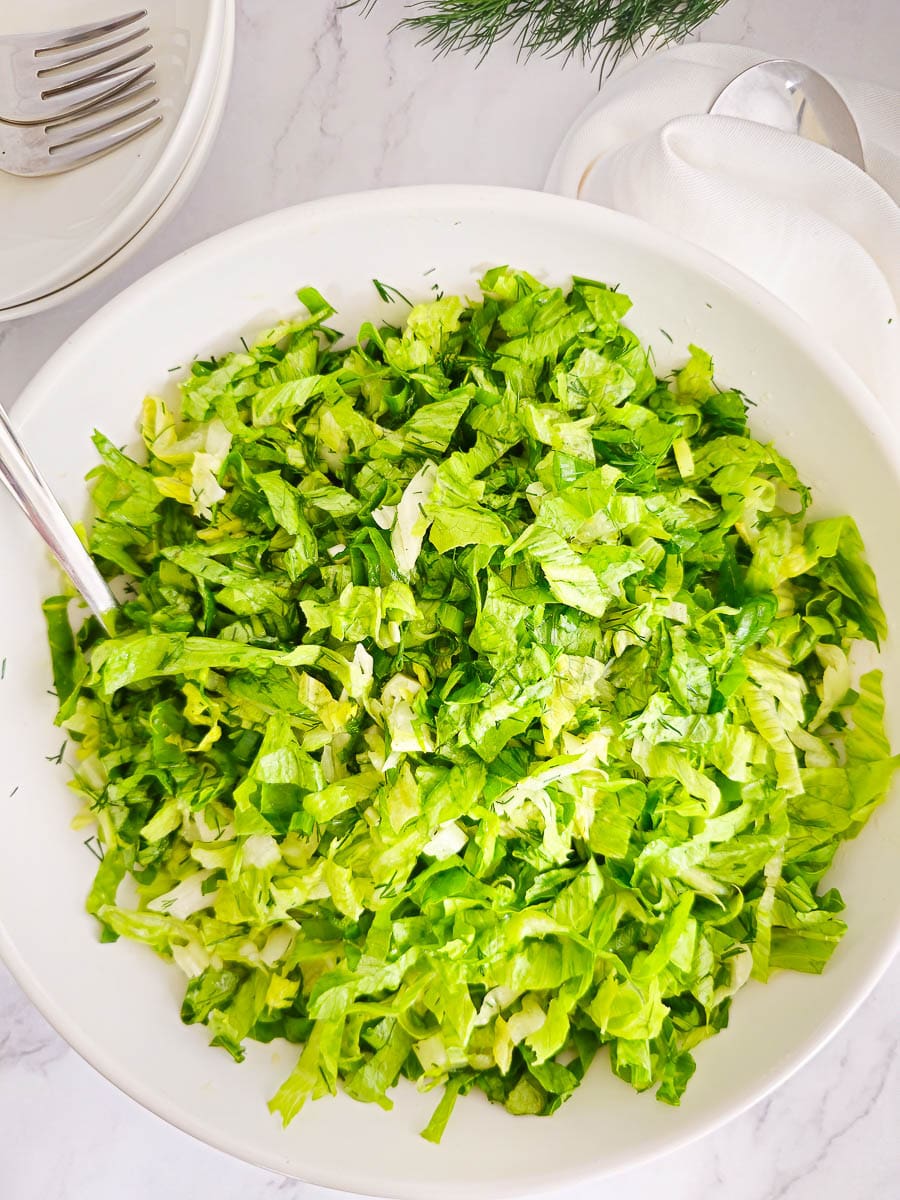
What is Maroulosalata?
The name “Maroulosalata” translates to “lettuce salad” in Greek, emphasising the primary ingredient of crisp lettuce, typically cos lettuce (romaine). Along with the lettuce, the salad commonly includes ingredients like spring onions (scallions), or sometimes red onions, fresh dill, and a simple olive oil vinaigrette dressing. It’s a light and flavourful side dish that complements a wide range of main courses, making it a staple in Greek cuisine.
The simple two-ingredient dressing
My mum’s go-to combination is a simple two-ingredient dressing: extra virgin olive oil and vinegar. This simple dressing effortlessly brings out the flavours of the fresh ingredients. The smooth texture of the olive oil and its rich taste combined with the vinegar adds a tanginess to the salad. My mum uses this dressing to dress many salads including Greek Salad (Horiatiki Salata), Beetroot Salad (Pantzaria Salata), Wild Greens Salad (Horta Salata), and Potato Salad (Patatosalata).
Hit your five-a-day-veggie-goal
Eating salad with your meals is an easy addition to ensure you get your recommended five servings of vegetables a day. Let’s face it, getting your dose of five serves isn’t always easy. According to dietary guidelines, one cup of raw leafy greens (like lettuce) typically equates to around one vegetable serve. Therefore, enjoying a generous portion of Greek Lettuce Salad can contribute to meeting your daily vegetable intake.
Ingredients for Greek Lettuce Salad
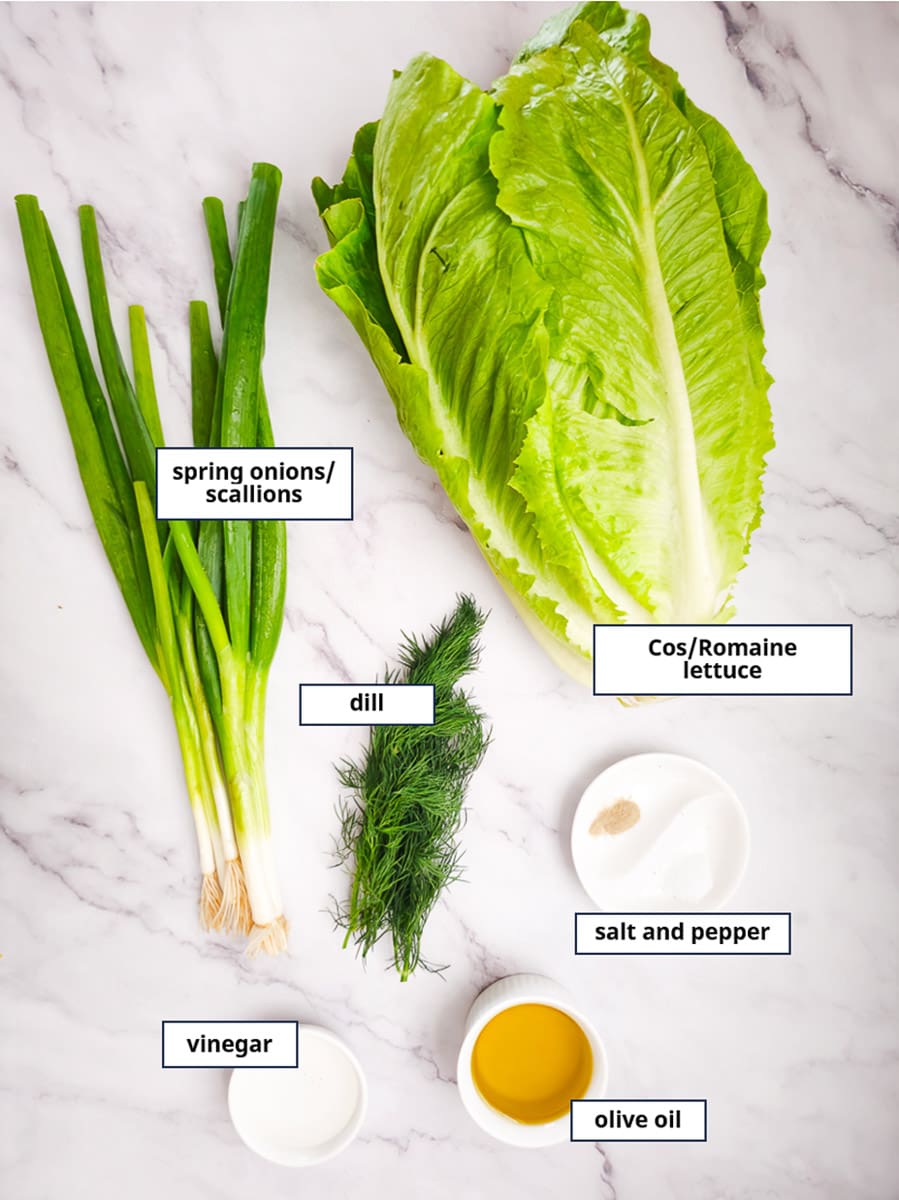
- Cos/Romaine Lettuce: Look for crisp, vibrant heads of lettuce with tightly packed leaves. You could even use iceberg lettuce if you prefer.
- Spring Onions/Scallions: Add a mild onion flavour and a hint of freshness to the salad. Choose fresh, green spring onions with firm bulbs and bright, crisp tops.
- Dill: Enhances the overall freshness of the salad. Choose fragrant, bright green dill with feathery leaves.
- Olive Oil: Use extra virgin olive oil for its rich taste and smooth texture, as it lends richness and depth to the salad while complementing the other ingredients with its distinct Mediterranean flavour.
- White Vinegar: Adds a subtle tanginess to the salad dressing, enhancing the overall flavour profile of the dish, without overpowering the other ingredients.
Health benefits of Greek Lettuce Salad
Lettuce forms the base of this salad, providing a solid foundation for meeting your daily vegetable needs with its rich content of vitamins A, C, and K, along with folate and fibre. Spring onions add a delicious touch while being loaded with antioxidants and nutrients like vitamin C and vitamin K, sneaking in an extra serving of vegetables. Fresh dill not only brings a burst of freshness to the salad but also contributes its own health benefits, being rich in vitamins A and C, and minerals like iron and calcium. Olive oil, often referred to as “liquid gold,” enhances the salad with heart-healthy monounsaturated fats and antioxidants, making it a valuable addition to your daily diet.
How to make Greek Lettuce Salad (Maroulosalata)
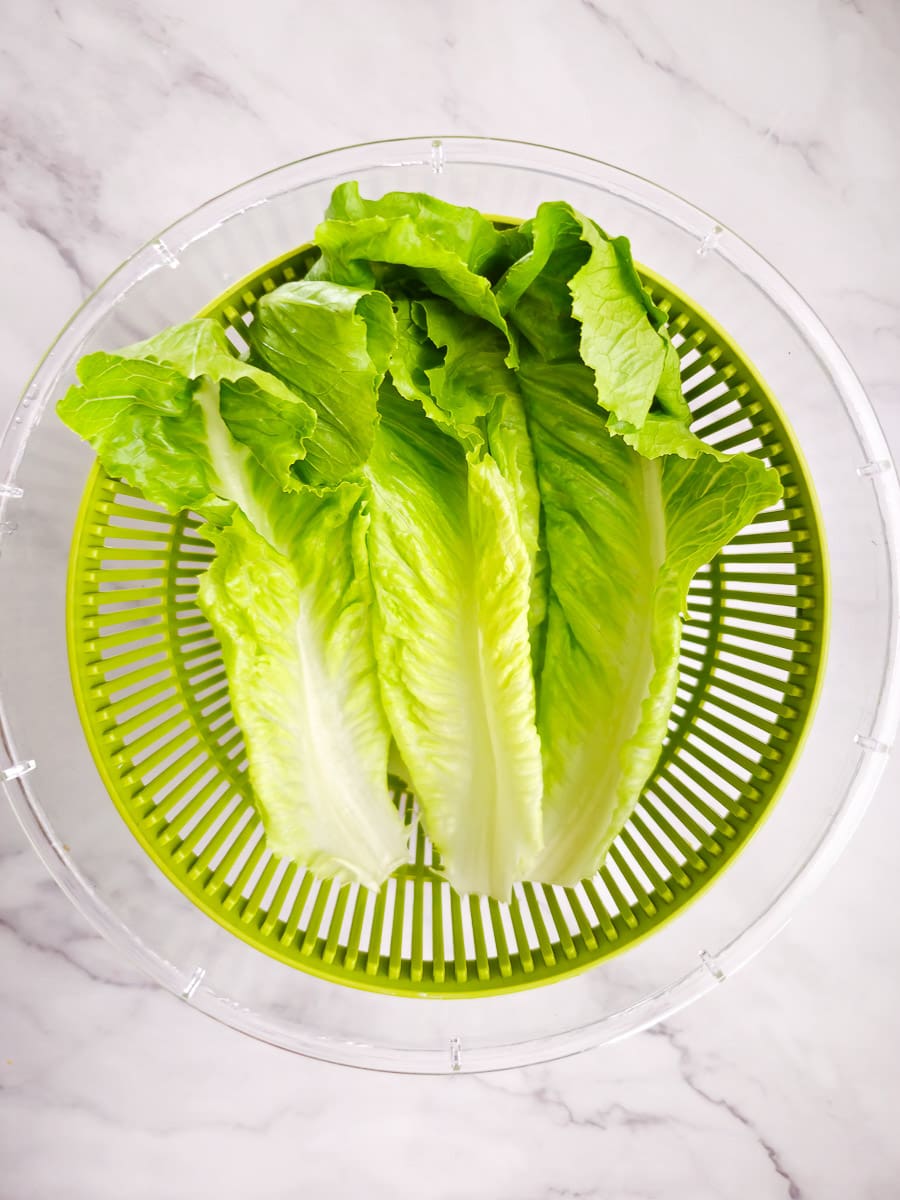
1. Wash lettuce leaves and drain using a salad spinner or pat dry with paper towels.
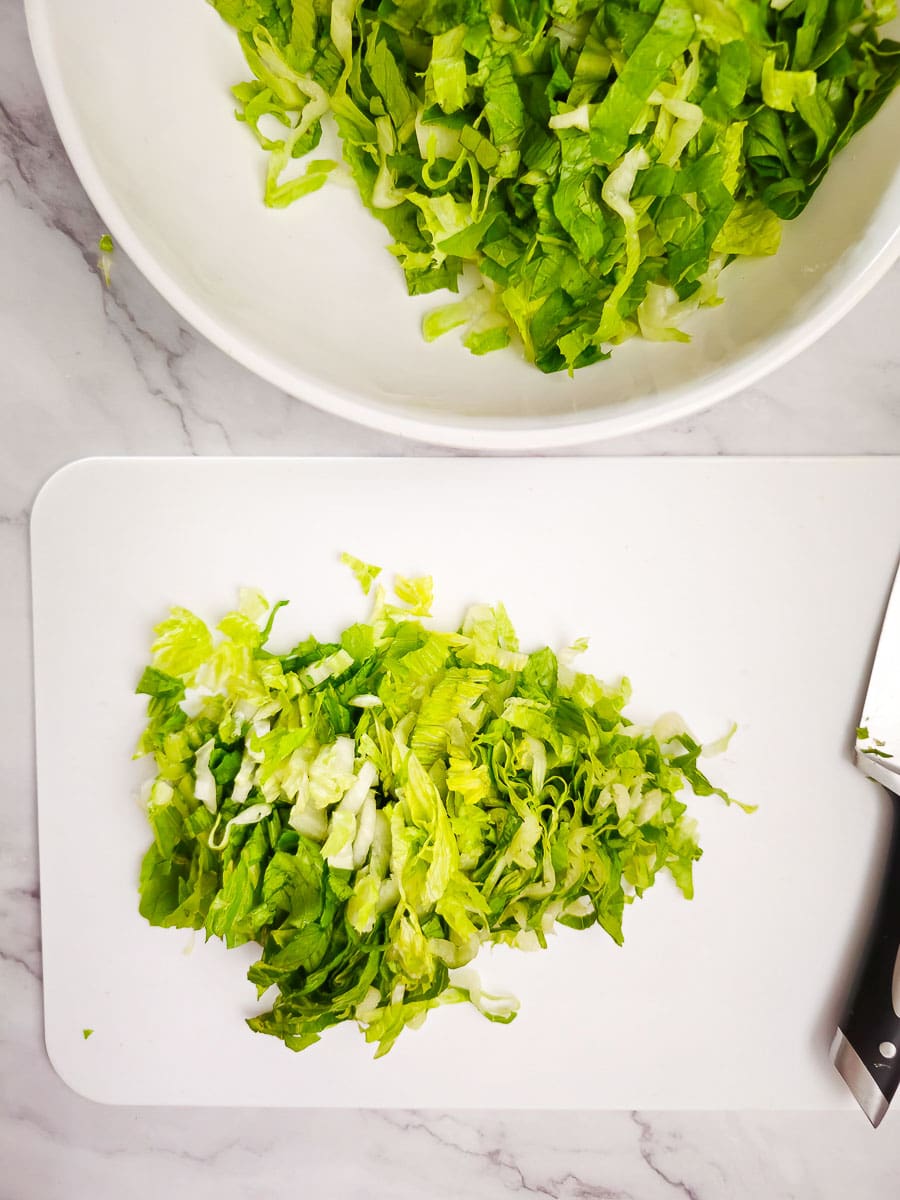
2. Finely shred lettuce.
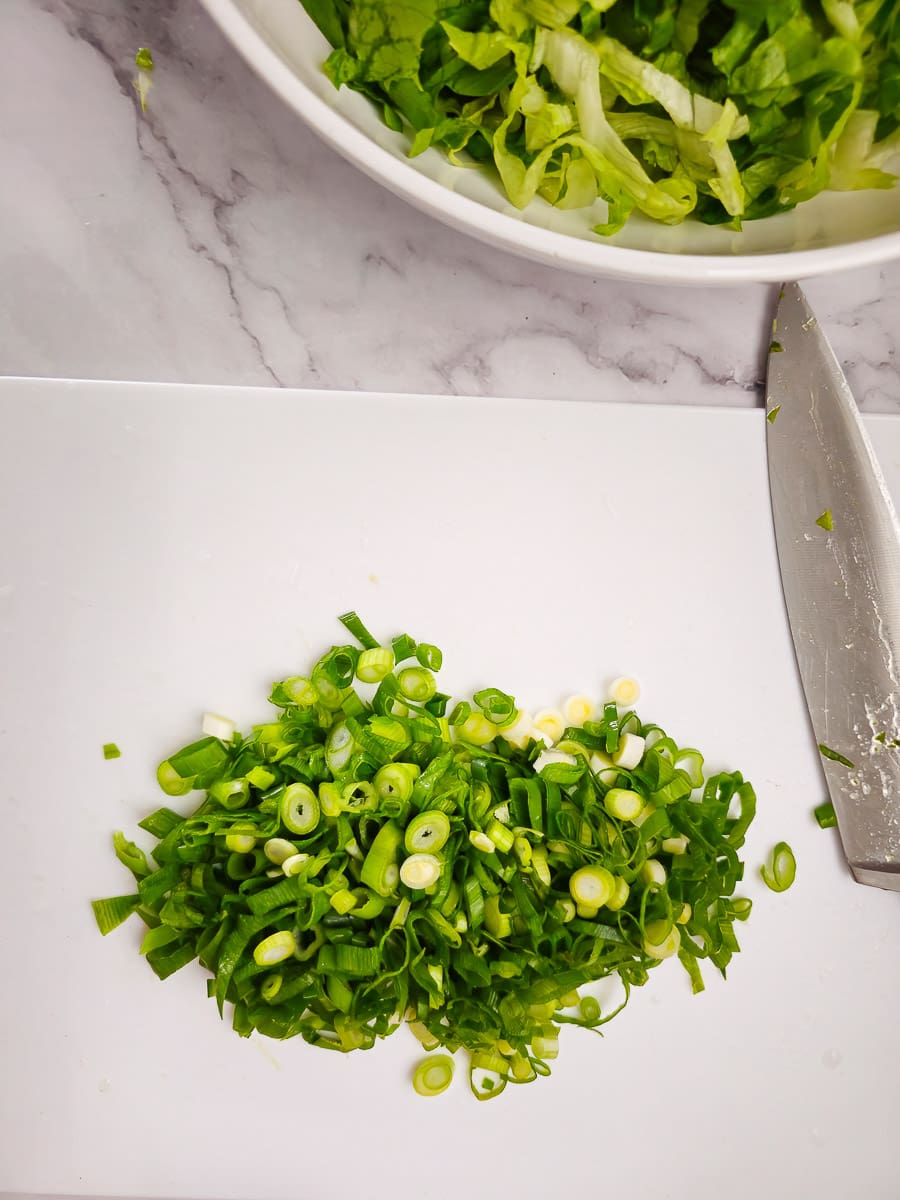
3. Finely slice spring onions.
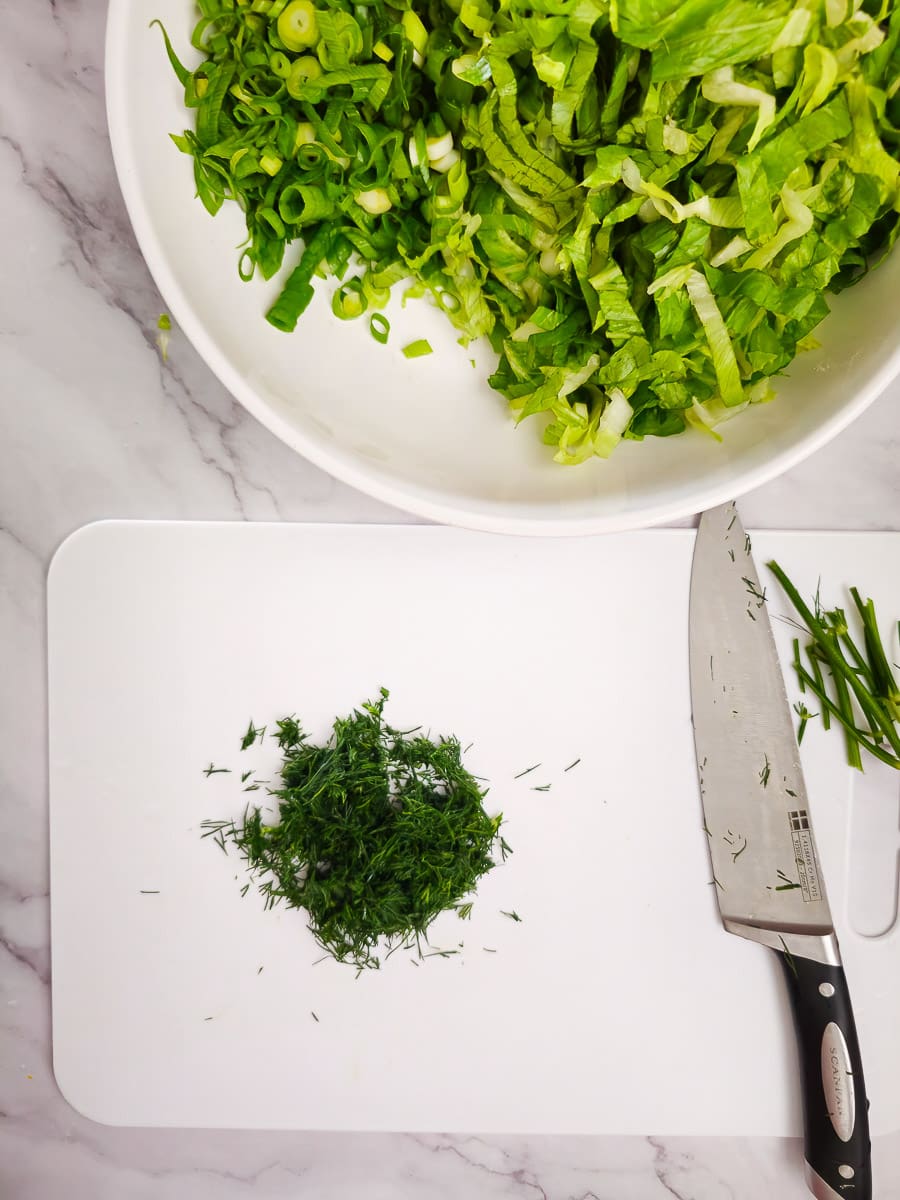
4. Chop dill.
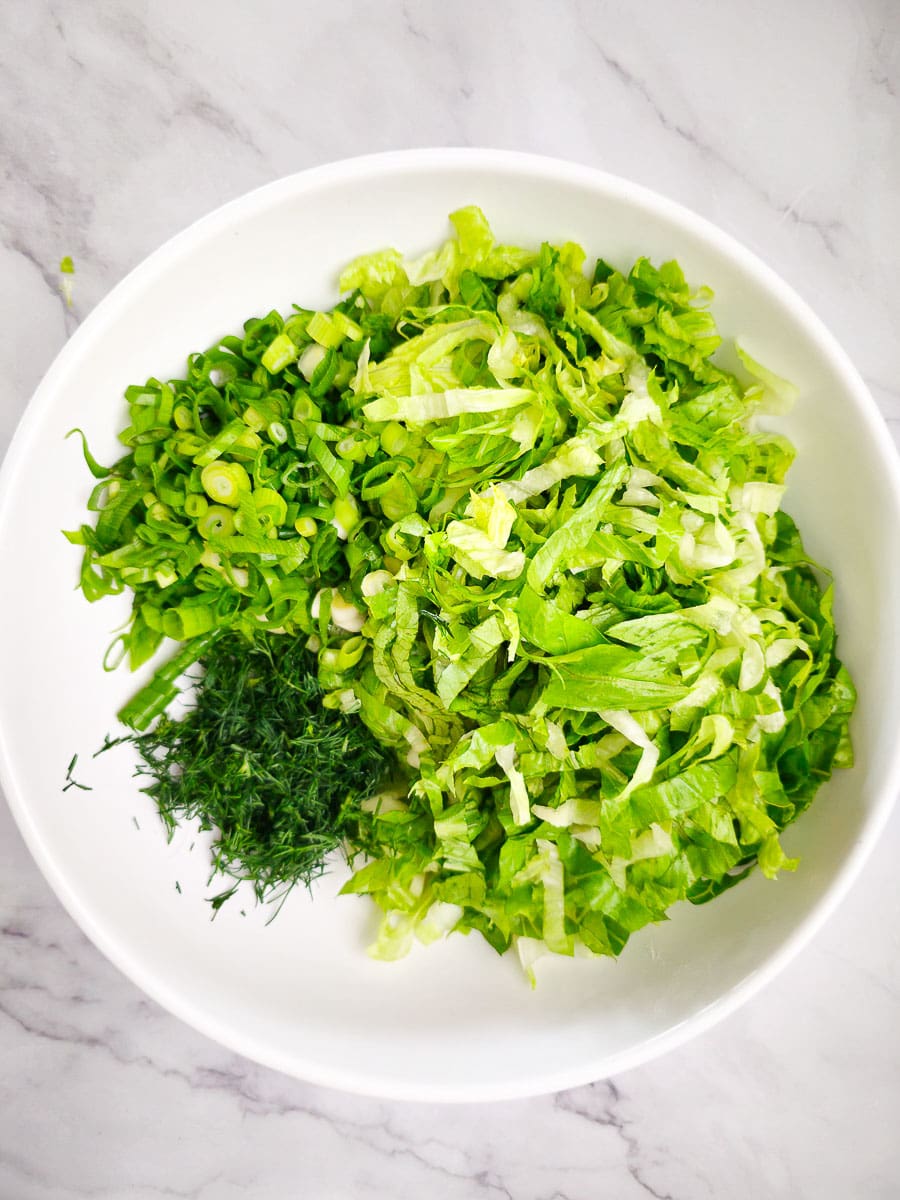
5. In a large bowl, add lettuce, spring onions and dill.
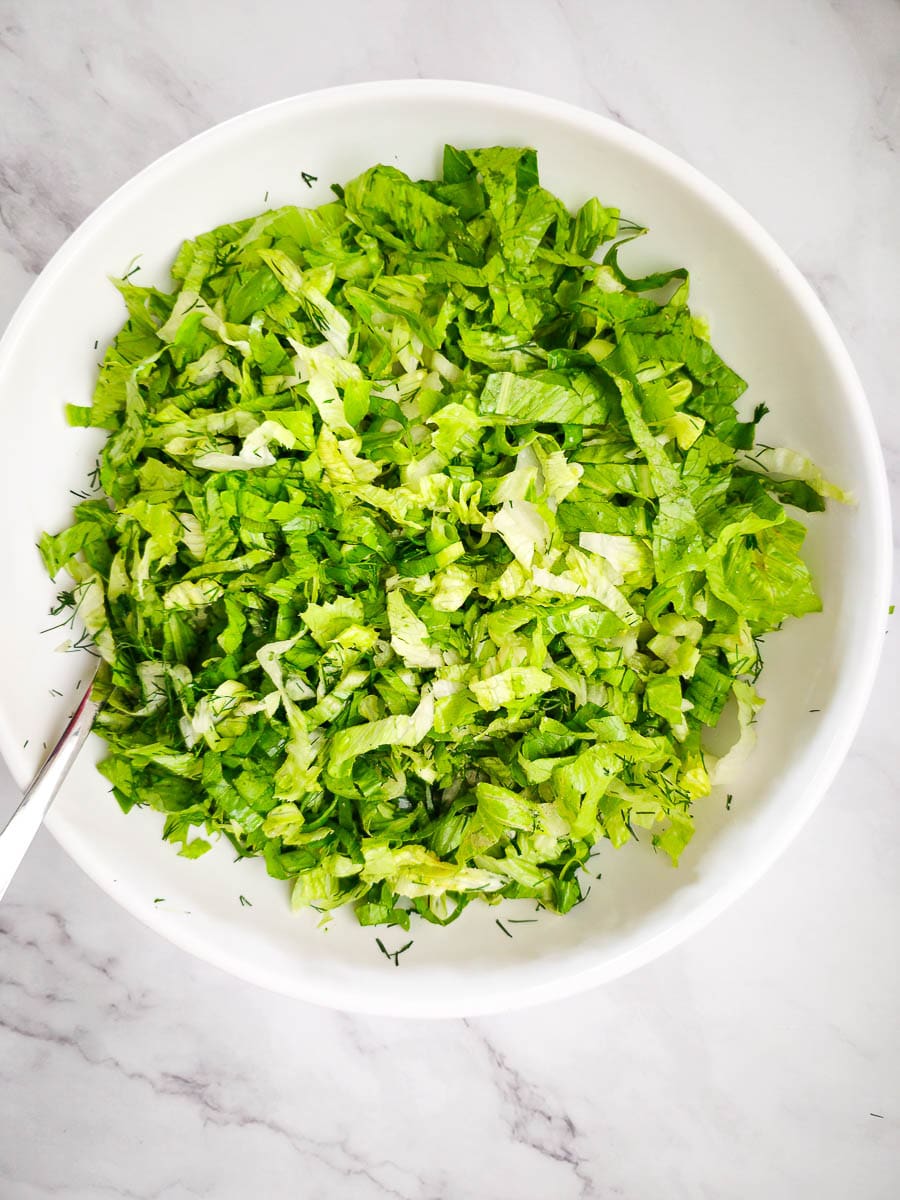
6. Season with salt and ground pepper (optional) and mix well.
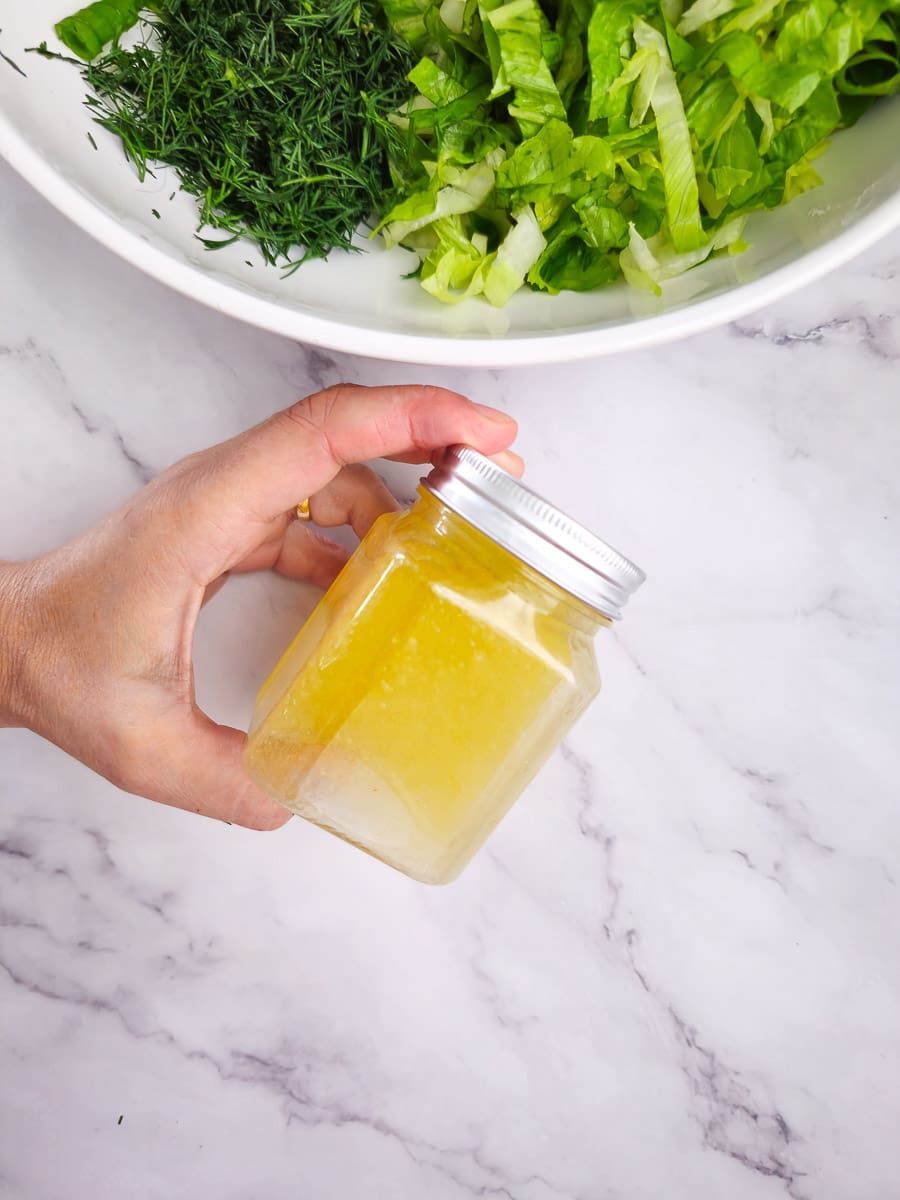
7. Prepare the dressing. Combine the olive oil and vinegar.

8. Just before serving your salad, pour over the dressing. Using tongs, gently mix well, making sure to coat the dressing over the lettuce leaves.
Tips for making Greek Lettuce Salad (Maroulosalata)
To make your lettuce extra crisp, follow these tips:
- Choose the Right Lettuce: Opt for varieties known for their crispness, such as romaine or iceberg lettuce. These varieties tend to hold up better and stay crispier than softer lettuces like butter or leaf lettuce.
- Chill the Lettuce: Place the lettuce in the refrigerator for at least 30 minutes before using it. The cold temperature helps to crisp up the leaves and enhances their crunchiness.
- Soak in Ice Water: Fill a large bowl with ice water and submerge the lettuce leaves for about 10-15 minutes. The cold water helps to crisp up the leaves while also hydrating them.
- Spin Dry: Use a salad spinner to remove excess moisture. The excess moisture can cause the leaves to wilt, so removing as much water as possible is essential for maintaining crispness.
- Pat Dry with Paper Towels: If you don’t have a salad spinner, gently pat the lettuce dry with paper towels after soaking it in ice water. Be careful not to crush the leaves while drying them.
- Store Properly: Store the lettuce in the refrigerator in a breathable container or perforated plastic bag. Avoid sealing it in airtight bags, as this can trap moisture and lead to wilting.
Storage
If you plan to make your Maroulosalata in advance, store the greens and vinaigrette separately to prevent the greens becoming soggy from the dressing.
Leftovers: Store the leftover salad in the refrigerator. Dressed salad can generally be kept for up to 1-2 days before it starts to wilt and lose its crispness. Undressed salad can last for up to 3 days.

